
Arcos de la Frontera, a dragon made in lime and stone
Arcos de la Frontera, on the Route of the Almoravids and Almohads, stands out between the mountain range of Cádiz and the fertile plain of Jerez as if it was a stranded ship. Romans called it Arx Arcis, which means “high-rised fortress”. Arkos, in times of al-Andalus, was a flourishing town that, after the fall of the Umayyad caliphate became a taifa (independent kingdom) headed by a king of Berber origin named Ben Khazrum.
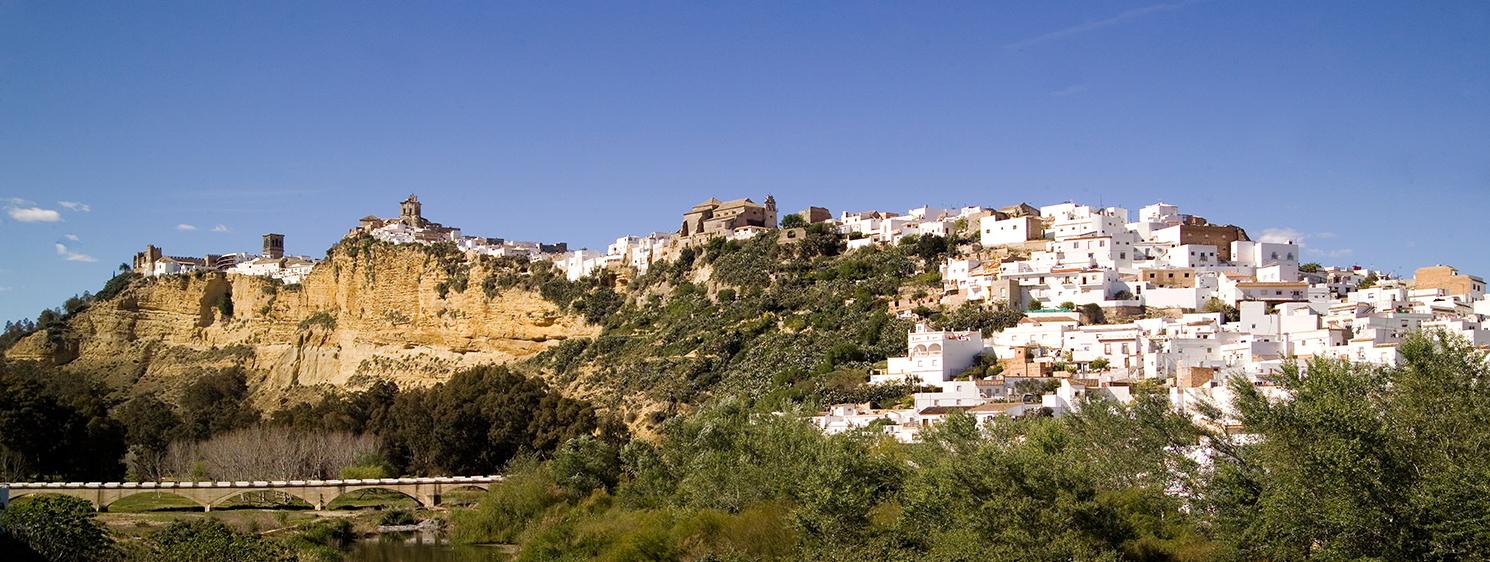
As mist rises, we start seeing from the last brow of the hill on the Gibalbín road the view of Arcos de la Frontera transformed into a dragon, with its head on Santa María and its tail in the houses that disperse, now softly, behind San Agustín.
We arrive during the days that women came to take part in the zambomba[1] to sing again the old Christmas carols with Baroque-Conceptist verses from the 17th and 18th centuries, an annual cultural event that so far does not need subsidies or sponsorships and that over the Advent nights shares the following naïve stanzas:
Down the road from Egypt to Nazareth
Walk Virgin Mary and Saint Joseph
And the boy of their dream
Fleeing from Herod
Go the three
And while they are walking,
Have you heard this,
Nightingales sing for them.
[1] Name given in Arcos de la Frontera to the parties that take place in the days prior to Christmas Eve.
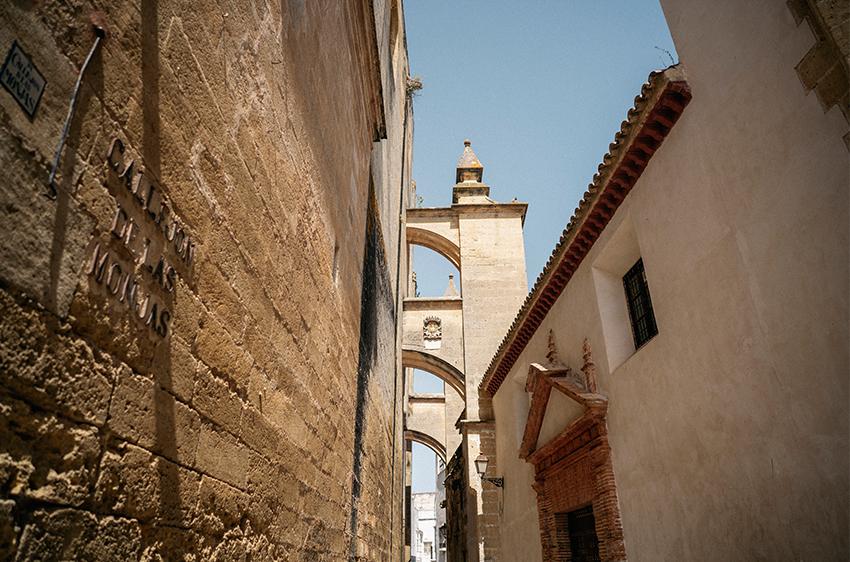
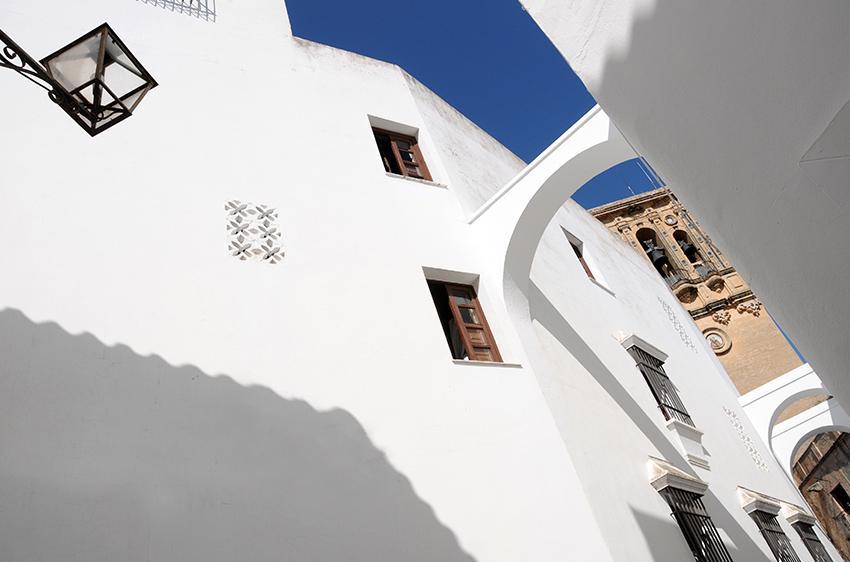
La Corredera crosses from side to side, as the name implies, which in many parts of the world ̶ from Fez to Prague ̶ would be named “the new city”, which it is no longer so, as the wrinkles of time start marking time in its houses. Here, on the flat plain, is where the Toro del Aleluya runs traditionally on the morning of Easter Sunday, being one of the few shreds of the popular corridas that took place on festival days.
Right at the point where 150 years ago stood the Puerta de Jerez, also starts the Cuesta (slope) de Belén, that heralds the Flamboyant Gothic style with manors like the one of the Count of Águila, the true lord of the city. A strange Gothic, linked to the Mudejar through the alfiz that was imposed on the pointed arches, banishing them, and above all, by means of limestone and stonework. Beside it is San Juan de Dios Hospital and the houses with flowerpots in their courtyards, whitewashed each year, getting rid, unabashedly, of their own personality. The arches, which cross one side to the other, act as buttresses to make the buildings stand on the rock, following one upon the other.
A lane sets the boundaries between the exterior sobriety of the castle and the stone filigrees of the church of Santa María la Mayor, one of the two cathedrals in the city. By this gate of hidden splendour, magically built into its façade, a stone that arrived in the times of Rome is perhaps the oldest relic that bears witness ̶ beautifully covered by lichens ̶ to the fact that Arcos did not go unnoticed on the men of the empire par excellence.
Walking up the steps of the last section we have reached what, for sure, is one of the most beautiful squares in Andalusia, that of the Cabildo (town hall).
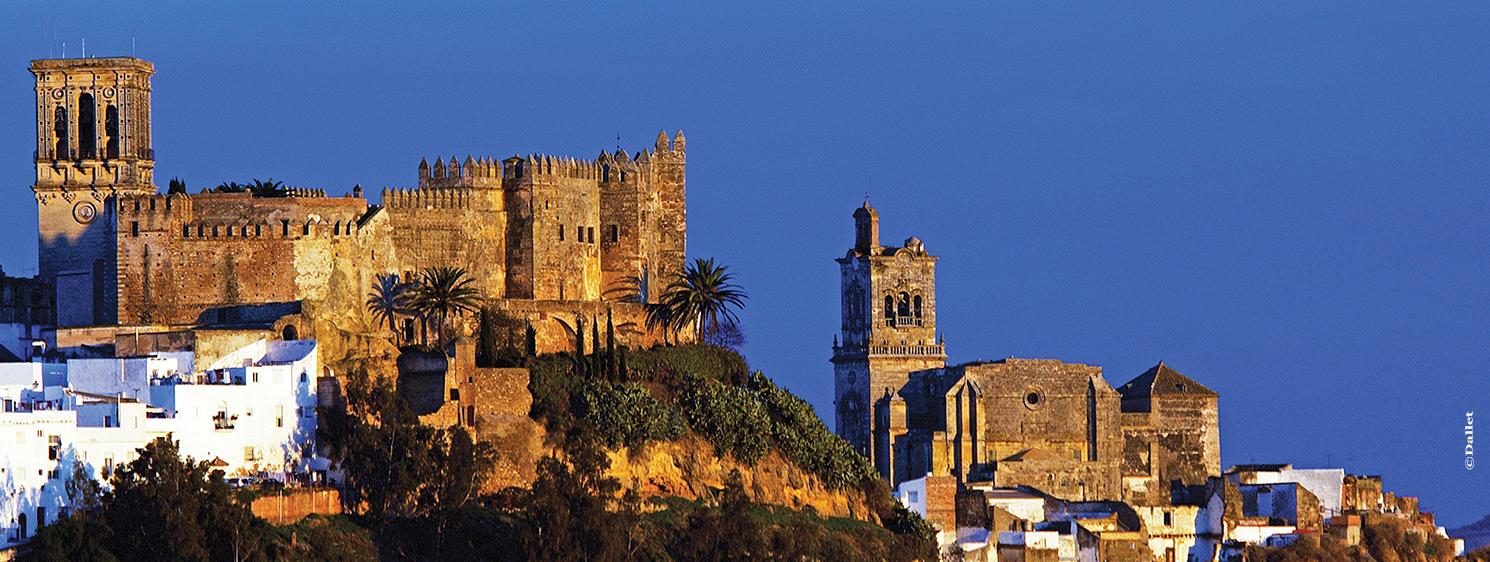
The mass of the castle has not the magnificent appearance of the façade-tower of the church, but it dominates the space, dwarfing the town hall. It is the identification document by which Arcos, before it was “de la Frontera” (of the border), was head of one of the taifa kingdoms, that of the Beni Kharzum’s, which broke, or maybe gave the backbone to, al-Andalus. The adarve (patrol path) that ascends until the castle’s gate is a shady slope, which is permanently closed tight. In any case, underneath it all, the Andalusian essence prevails in the balcony by which Arcos leans out towards the overwhelming plain, which starts or ends in the winding Guadalete River.
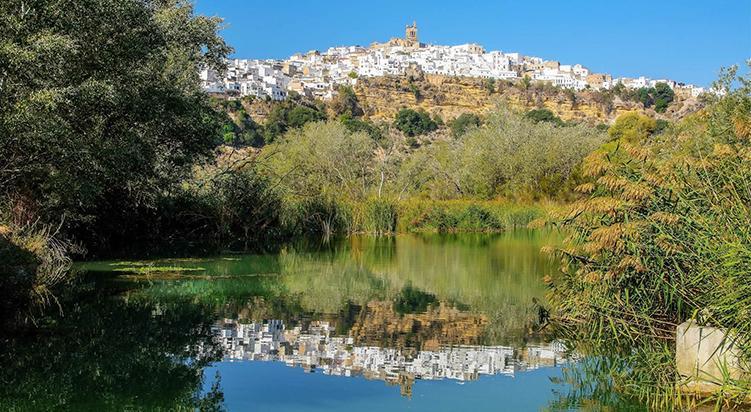
It is a mythological river from which we might draw many secrets, to know if it was true ̶ or not ̶ that battle that fills the terra incognita in history books, which, eventually, marked and continues marking the history of the whole Spain. Arcos, like most of the “medium cities” in Andalusia, is the criss-crossed fruit of all that.
When at the end of the XII century the geographer al-Idrisi wrote in his Description of Spain, the itineraries that today make up the current territory of Andalusia were all dotted with towns a day or so away. Today, we almost continue finding the same cities with the same names, although adapted to the Spanish phonetics, and almost all of them owe their splendour to the centuries of the Middle Ages, halfway between cultures al-Andalus and the “new Castile” of the late Middle Ages or Renaissance that was Andalusia.
The unique location and the landscape of cities like this were almost always an important factor throughout the centuries for war and defence, for commerce, for everything related to agrarian culture . They are “medium” not because of its size, but because of their personality as border-cities. Borders between centuries, between civilizations, between river basins, between Lorca’s olive tree, wheat, vine, and the orange tree… between themselves. That has been proclaimed by the Romancero, built verse by verse in those centuries.
Now, in the midst of any week and by fall, the Parador Nacional is a haven of peace. Its wooden balconies, leaning out from the cliff, feature ancestral lattices and allow a view of the territory that gave birth to the three ducal houses that dominated the American Andalusia. For, while the Alba family were fighting in the Netherlands, from Sanlúcar to Úbeda passing by Jerez and Seville, three were the dynasties in power: that of Medina Sidonia, Arcos, and the one of Alcalá de los Gazules, three peaks of this plain, now manageable with just a glance.
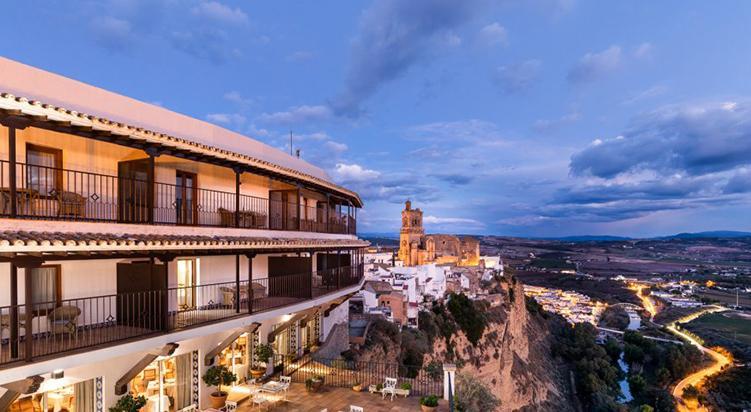
In the sun and shade of the walls of Escribanos Street, the grey hues burst with the red of geraniums, and the convent of the Mercedarias exhales the aromas of Christmas sweets. We could not resist the temptation to go there, and after pronouncing an “Ave Maria Purísima” we have found ourselves asking the price of pine nut and almond pastries cakes in order to continue along the path.
This takes us to what once was a Jesuits church, unfinished or demolished to half of its walls, whose enclosure is now used as Plaza de Abastos (local market) like those in the old days, with fresh and shiny products at your fingertips, while vendors’ cries break the morning.
Next to it, the Teatro Olivares Veas is rare Gothic piece, a uniquely Modernist building amidst a whorl of Gothic, Mudéjar and Barroque. But the grace of its curved lines makes it seem to have escaped from Vienna. In the deep street by its side, that of the Maldonado family, there are plenty of houses with workshops, with their courtyards into which the sun hardly reaches, their wells full of mystery and rich, green aspidistras.
From there we can get to the church of San Pedro, after crossing the gate that reveals to the wayfarer the Andalusí garden in the palace of the Maestrazgo, where nowadays architecture and gardening have wanted to recreate a concept rather than preserve archaeologically something from the past.
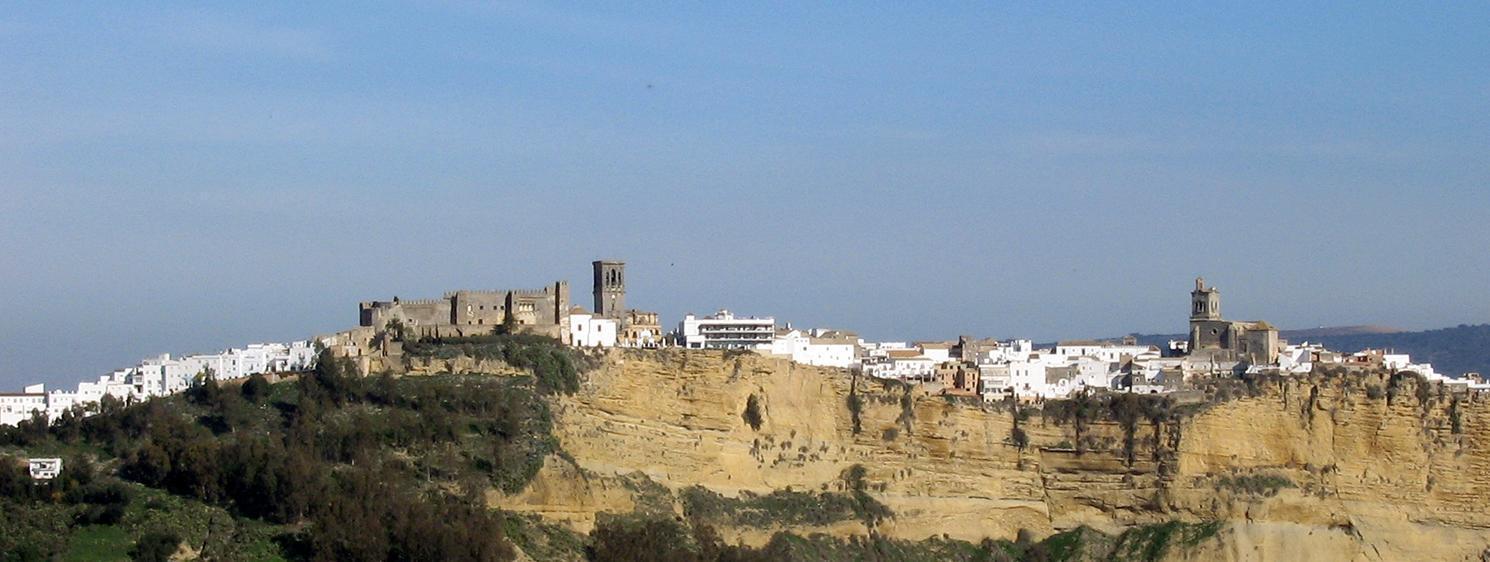
The church, its exterior like a magical mountain, is unfathomable from here; the narrowness of its surroundings streets prevents it from being seen. Its forms become visible only from afar. By contrast, it displays to the visitor the solemnity and richness of its interior with works by the most prestigious artists from the 16th and 17th centuries, who competed with the ones of Santa María and the relics of martyred Roman saints, brought here to demonstrate the antiquity of the city amidst magnificent processions. The dukes presided over the parades, but they lived in Seville, in the square of the Ponce de León family, a hub of several delimited areas where they imposed their power by calling it their neighbourhood, just as other lineages had their own too.
But this street, which is actually the same one that departs from the square, now descends slowly running over the neighbouring ones with only small, steep slopes until reaching San Agustin ̶ already in Peña Vieja ̶ almost a poor-quarter temple, despite being behind the Puerta Matrera, the only one left inside the walled enclosure. However, San Agustín becomes the city centre during the Holy Week, for it is from here that Jesus of Nazareth departs and returns, the symbol in these days of the longings, wishes, and feeling of all people.
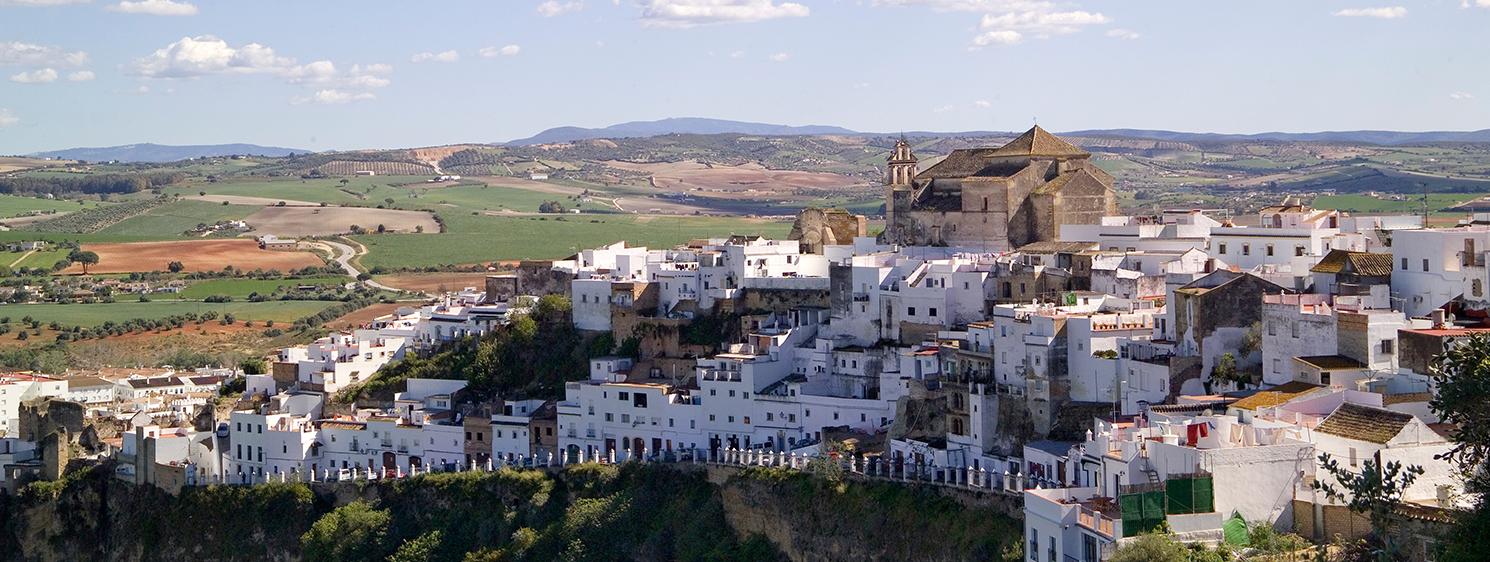
The mass of the Sierra del Pinar of Grazalema can be seen far in the distance, protruding unashamed behind Villamartín and Prado del Rey. We got lost again in the sight of the streets until we reach the stone yards in the palace of the Mayorazgo, deep, with high windows whose glasses reflect the crest on the other side of the street. We take a look at the old Colegio de las Nieves, and we stop to rest for a while, next to Juan Cuenca’s palatial home, in Plaza del Cananeo, where the verses of Calderon de la Barca’s Autos Sacramentales seem to be still heard. Amidst these houses, neither big nor small, which keep the prestige of time, we can sense the nostalgic flavour of this city, a dragon made of lime and stone.
By Antonio Zoido
Writer
